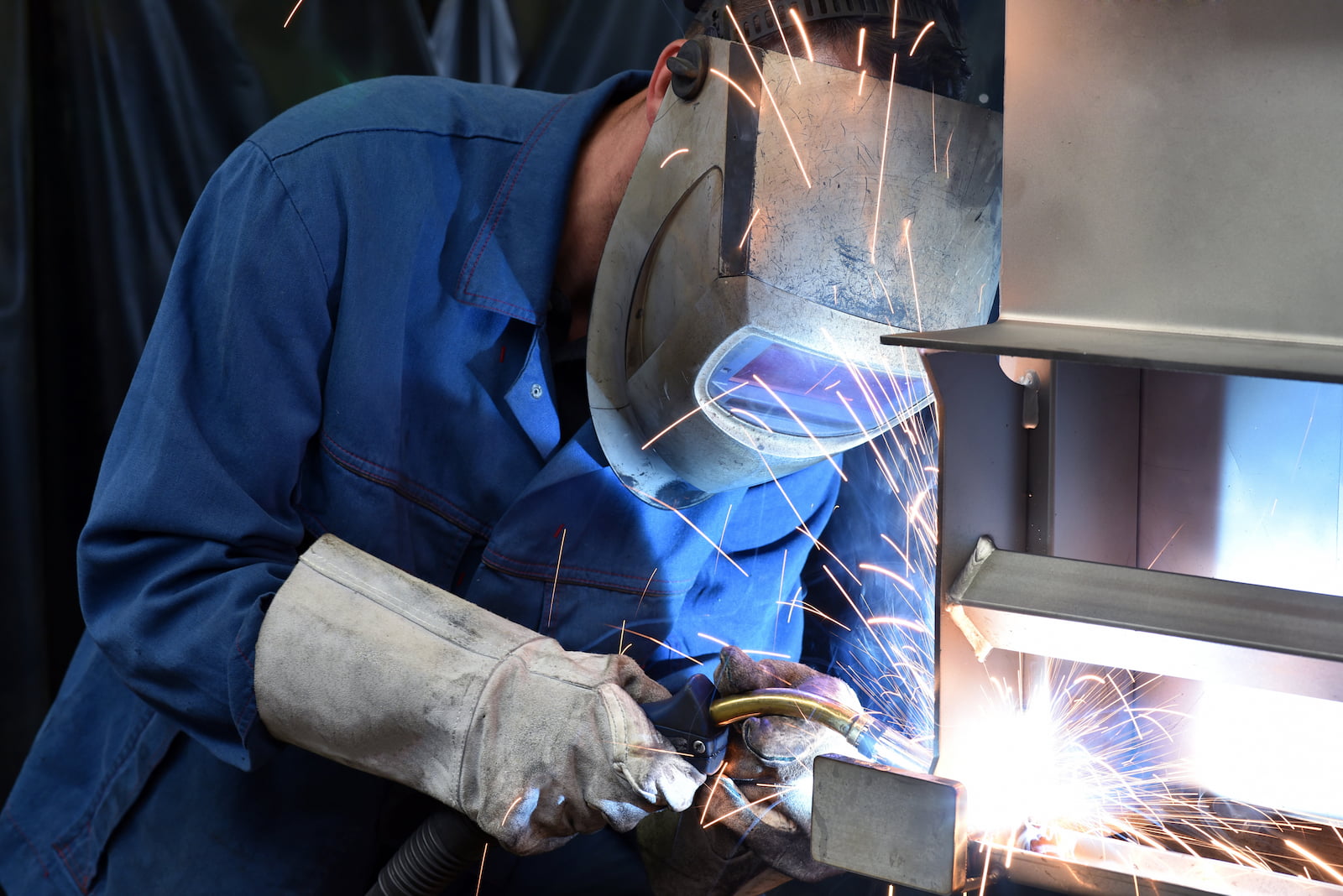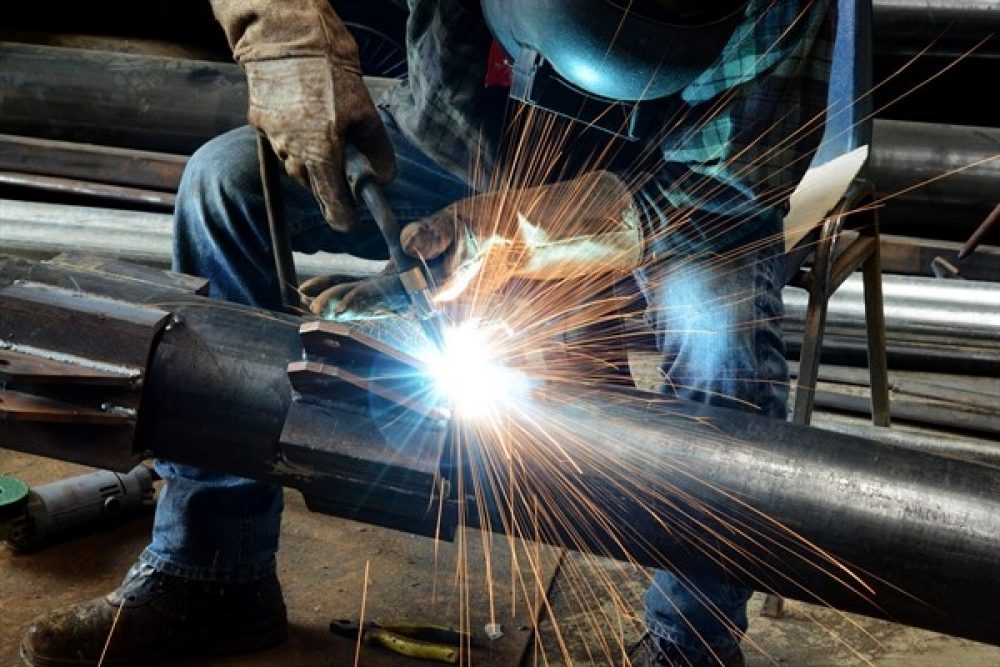All About Welding: Key Insights Into Techniques and Ideal Practices for Success
Welding incorporates a selection of methods, each fit for details materials and applications. Comprehending these approaches, such as GMAW, SMAW, and TIG, is necessary for attaining perfect results. Moreover, the appropriate equipment and safety methods can not be overlooked. As preparation and fixing play vital roles in the welding process, understanding these aspects can substantially enhance the top quality of the final product. What are the key elements that guarantee a successful weld?
Understanding Various Welding Strategies
Welding methods encompass a selection of techniques, each suited to specific applications and materials. Among the most common techniques are Gas Steel Arc Welding (GMAW), Secured Steel Arc Welding (SMAW), and Tungsten Inert Gas Welding (TIG) GMAW, also understood as MIG welding, is popular for its speed and versatility, making it suitable for thin products. SMAW, or stick welding, is preferred for its simplicity and effectiveness in exterior atmospheres, especially with thicker metals. TIG welding uses precision and control, making it suitable for complex work and non-ferrous steels (Montana Mobile Welding and Repair Welding). Each method has its special benefits and considerations, permitting welders to choose the very best technique based upon the job's demands, product kind, and preferred end results. Comprehending these techniques is important for successful welding
Important Welding Devices and Tools
While different welding techniques require certain abilities, the best tools and devices are equally important for attaining top quality results. Vital welding equipment consists of welding makers, which differ depending on the strategy-- such as MIG, TIG, or stick welding. Protective gear, consisting of aprons, gloves, and headgears, guarantees security and convenience throughout the procedure. Furthermore, fixtures and clamps aid safeguard products in place, making sure precision in welds. Consumables like welding rods, wire, and shielding gas are likewise crucial parts that affect the top quality of the weld. In addition, devices such as cutters and mills assist in surface preparation and post-weld ending up, adding to an expert result. Purchasing top quality equipment eventually improves the efficiency and efficiency of welding projects.
Security Practices in Welding
Appropriate security practices are essential in the welding industry to safeguard workers from potential threats. Welders need to wear proper personal safety devices (PPE), including helmets with proper shading, handwear covers, and flame-resistant clothing. Appropriate ventilation is important to reduce direct exposure to harmful fumes and gases generated throughout the welding process. In addition, workers should be learnt the appropriate handling of welding devices to protect against crashes. Fire safety and security actions, such as maintaining combustible materials far from the welding location and having fire extinguishers readily available, are required. Regular assessments of tools and work spaces can help recognize potential dangers prior to they result in crashes. By adhering to these safety methods, welders can develop a safer working environment and reduce dangers connected with their trade.
Readying Materials for Welding
Preparing products for welding is an important step that substantially affects the quality and integrity of the end product (Montana Mobile Welding and Repair Belgrade Welding). Appropriate preparation includes cleansing the surfaces to remove contaminants such as oil, rust, and dirt, which can jeopardize the weld. Strategies such as grinding, fining sand, or making use of solvents are typically used to accomplish a tidy surface. Additionally, making sure that the materials mesh well is essential; spaces can bring about weak welds. It's additionally essential to take into consideration the placement and positioning of the components, as this will certainly affect the simplicity of welding and the final outcome. Picking the suitable filler product and making certain compatibility with the base metals is essential for attaining strong, long lasting welds.
Tips for Getting High-Quality Welds
Attaining high-quality welds calls for interest to information and adherence to best practices throughout the welding procedure. Correct joint prep work is important, ensuring surfaces are free and clean from impurities. Choosing the ideal filler product and welding method based upon the base metals is essential for perfect bonding. Maintaining consistent travel rate and angle while welding can prevent defects and promote harmony. Additionally, regulating warm input is essential; extreme warm can lead to warping and deteriorated joints. Frequently examining the welds throughout the process allows for immediate changes if needed. Employing proper post-weld treatments, such as cleaning and stress and anxiety alleviation, can boost the resilience and integrity of the weld, inevitably making certain an effective outcome.
Fixing Usual Welding Issues
Welding frequently presents difficulties that can affect the high quality and honesty of the end product. Common problems such as porosity, irregular weld beads, and getting too hot can occur, each requiring particular fixing methods. Comprehending these problems is vital for welders to boost their abilities and attain suitable results.
Porosity Problems Clarified
Although porosity can frequently be overlooked, it continues to be a critical concern in welding that can endanger the stability of a completed product. Porosity refers to the existence of tiny gas pockets within the weld grain, which can deteriorate the joint and lead to early failure. This trouble commonly develops from pollutants, dampness, or incorrect securing gas insurance coverage during the welding process. To mitigate porosity, welders should verify that the base products are tidy and dry, utilize ideal securing gases, and keep constant more helpful hints welding criteria. Frequently inspecting the devices and atmosphere can also help identify potential problems before they materialize in the weld. Addressing porosity properly is essential for accomplishing strong, resilient welds that satisfy high quality requirements.

Irregular Weld Beans
Inconsistent weld beads can significantly affect the high quality and stamina of a finished product. Different aspects add to this concern, consisting of incorrect travel rate, inaccurate amperage settings, and irregular electrode angles. When the welder moves too swiftly, a bead might appear slim and do not have penetration, while moving as well slowly can trigger excessive buildup. Additionally, using the incorrect amperage can result in either damaging or too much spatter, both of which compromise weld honesty. The welder's technique, such as inconsistent lantern movement, can also lead to irregular grain look. To reduce these issues, welders must concentrate on keeping stable, controlled movements and ensuring correct tools settings to accomplish uniformity in their welds. Consistency is vital to accomplishing solid and trusted welds.
Overheating and Bending Issues
Extreme warmth during the welding procedure can cause substantial overheating and contorting issues, affecting the architectural integrity of the work surface. These problems frequently materialize as distortion, which can endanger positioning and fit-up, making additional setting up testing. Elements adding to overheating consist of the option of welding criteria, such as voltage and take a trip speed, along with the kind of material being bonded. To alleviate these problems, welders must preserve regular traveling speed and appropriate heat input while monitoring the work surface temperature. In addition, pre-heating or post-weld warmth therapy can help relieve tensions created by rapid cooling - Montana Mobile Welding and Repair Belgrade Welding. Regular inspection and adherence to best practices are essential in stopping overheating and ensuring the longevity and reliability of bonded frameworks
Frequently Asked Concerns
What Are the Profession Opportunities in the Welding Market?
The welding market offers diverse occupation opportunities, including positions as welders, teachers, examiners, and designers. Professionals can work in production, construction, aerospace, and automotive markets, gaining from solid need and affordable incomes in different duties.
How Can I Improve My Welding Speed Without Sacrificing Quality?
To boost welding speed without giving up high quality, one must exercise reliable strategies, preserve equipment, enhance setups, and boost hand-eye control. Routine training and seeking responses can likewise considerably contribute to attaining much faster, premium welds.
What Qualifications Are Offered for Welders?
Countless qualifications exist for welders, consisting of those from the American Welding Culture (AWS), the National Center for Building And Construction Education and Research (NCCER), and different industry-specific companies. These credentials enhance employability and demonstrate ability effectiveness.
Just How Does Welding Impact the Features of Metals?
Welding affects the residential properties of steels by changing their microstructure, which can bring about changes in strength, firmness, and ductility. Heat input and air conditioning rates during the process significantly impact these product attributes.
Can I Bonded Dissimilar Metals With Each Other?
